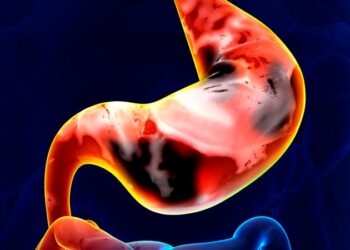Rates of depression and anxiety were significantly higher in people with chronic pain than in those without pain, results of a new meta-analysis and systematic review showed.
Prevalence was also higher based on pain type, with higher rates of depression and anxiety among those with fibromyalgia than those with osteoarthritis, investigators found.
“The surprising finding is the significant distribution of prevalence in different pain conditions — people with certain types of pain are more vulnerable to depression and anxiety, which is important from a clinical perspective,” lead investigator Rachel Aaron, PhD, assistant professor at Johns Hopkins Medicine, Department of Physical Medicine and Rehabilitation, Baltimore, told Medscape Medical News.
The findings were published online on March 7 in the JAMA Network Open.
Addressing the Gap
In previous population studies, prevalence rates of co-occurring chronic pain and anxiety and depression symptoms varied widely. There was the need for a systematic review to synthesize the findings and clearly define the overall impact of chronic pain and co-occurring depression and anxiety.
To address the gap, researchers reviewed 376 studies published between 2013 and 2023 with 347,468 adults with chronic pain (excluding chronic headaches) and 160,564 control participants across 50 countries. The mean age of the pain group was 51 years, and 70% were women.
Overall, adults with chronic pain were at higher risk for clinical symptoms of depression and anxiety than clinical and nonclinical control individuals.
Investigators recorded a pooled prevalence of 39.3% for clinical symptoms of depression (95% CI, 37.3%-41.1%) and 40.2% for clinical symptoms of anxiety (95% CI, 38%-42.4%). This was considerably higher than rates of depression (13.9%) and anxiety (16.4%) reported in the control groups.
Based on the Diagnostic and Statistical Manual of Mental Disorders, Fifth Edition, diagnosis criteria, 37% of adults with chronic pain met diagnostic criteria for major depressive disorder compared with 10.1% in the control group. Generalized anxiety disorder was also more common in the chronic pain group vs the control group (16.7% vs 3.5%, respectively).
Importance of Pain Type?
Investigators also found that certain types of pain conditions were more strongly associated with depression and anxiety than others. For example, depression and anxiety were higher in people with fibromyalgia than in those with osteoarthritis (54% vs 29.1% and 55.5% vs 17.5%, respectively).
“Although we were unable to test directionality of the relationship between chronic pain, depression, and anxiety in the study, one thought is people with fibromyalgia and other nociplastic-related pain conditions are more vulnerable to developing depression and anxiety in the first place, and that could be a factor driving chronic pain,” Aaron said.
Prevalence of depression and anxiety was also higher in younger individuals and in women (P < .001 for both), which Aaron said, “replicates what we see in the general population that rates of depression and anxiety are higher in women.”
Clinical symptoms of depression were higher among those recruited from clinical settings, while longer pain duration was associated with greater risk for anxiety symptoms.
The authors reported high heterogeneity, particularly across subgroup analyses.
“What that means is that we cannot say with a great deal of certainty who is more vulnerable to depression and anxiety in chronic pain and why, although we can make some broader generalizations,” Aaron explained.
The findings point to the importance of routine screening of depression and anxiety in clinical settings where people with chronic pain are seen, Aaron said.
Moreover, “while we highlight that depression and anxiety is high, we don’t want to forget that it is not the case for everybody,” Aaron added, noting that 60% of people with chronic pain did not meet criteria for significant levels of depression and anxiety.
Directionality Problems
Commenting on the study for Medscape Medical News, Gary Small, MD, chair of Psychiatry at Hackensack University Medical Center, Hackensack, New Jersey, noted that the finding that rates of depression and anxiety varied based on pain type was particularly interesting.
“With arthritis, there are recognized underlying pathological processes; anxiety and depression rates were lower. But, in people with diffused pain from fibromyalgia, where you cannot locate source of pathology, depression, and anxiety rates were higher,” Small said.
“This suggests a feedback mechanism between the mental experience and physical source of pain. You get anxious about your pain, and when you don’t understand where it is coming from, it makes feelings of depression and anxiety worse,” said Small, who was not involved in the study.
Christina Lee, MD, psychiatrist and medical director of Mental Health Services at Kaiser Permanente in Baltimore, felt the large dataset of nearly 350,000 patients across 376 studies was both a strength and limitation.
“While it provides robust evidence for the link between chronic pain and mental health, the high variability across studies makes it difficult to draw precise conclusions. Some studies used self-reported symptoms, while others relied on clinical diagnoses, leading to inconsistencies in measurement,” she said.
She also noted that the actual rate of diagnosed psychiatric disorders was lower. “Are we underdiagnosing these conditions, or are symptoms fluctuating rather than meeting full clinical criteria?” she asked.
“This study does not establish causation. Does chronic pain trigger depression, or do mood disorders exacerbate pain perception?” Lee said.
Aaron is supported by grant K23HD104934 from the National Institutes of Health. Joanne Dudeney, PhD, is supported by a Macquarie University Research Fellowship. Small and Lee reported no relevant conflicts of interest.
Source link : https://www.medscape.com/viewarticle/high-global-rates-comorbid-depression-anxiety-chronic-pain-2025a10007t1?src=rss
Author :
Publish date : 2025-04-01 11:57:00
Copyright for syndicated content belongs to the linked Source.














